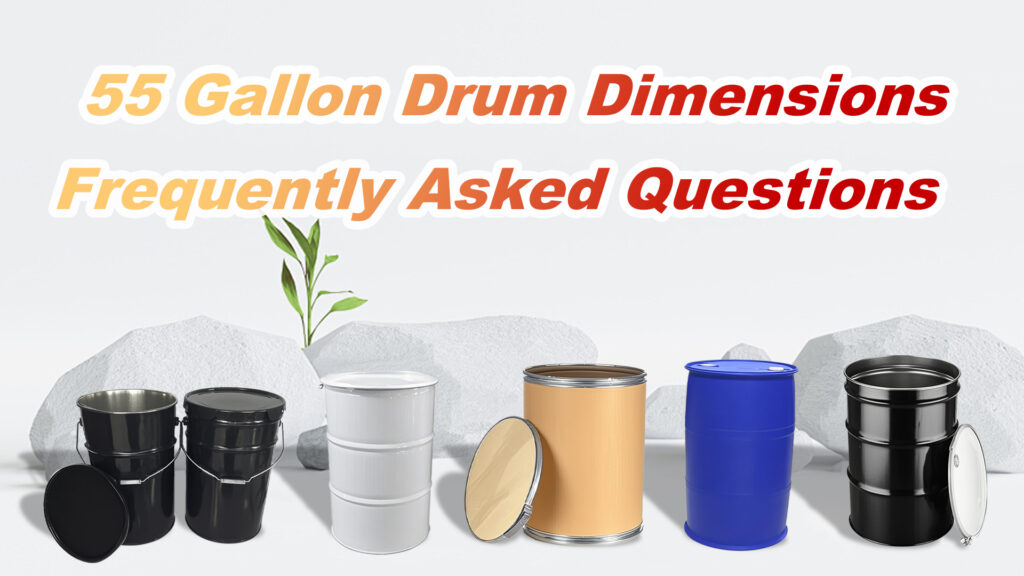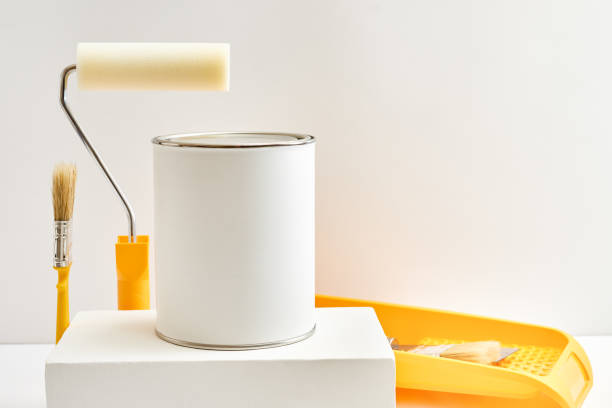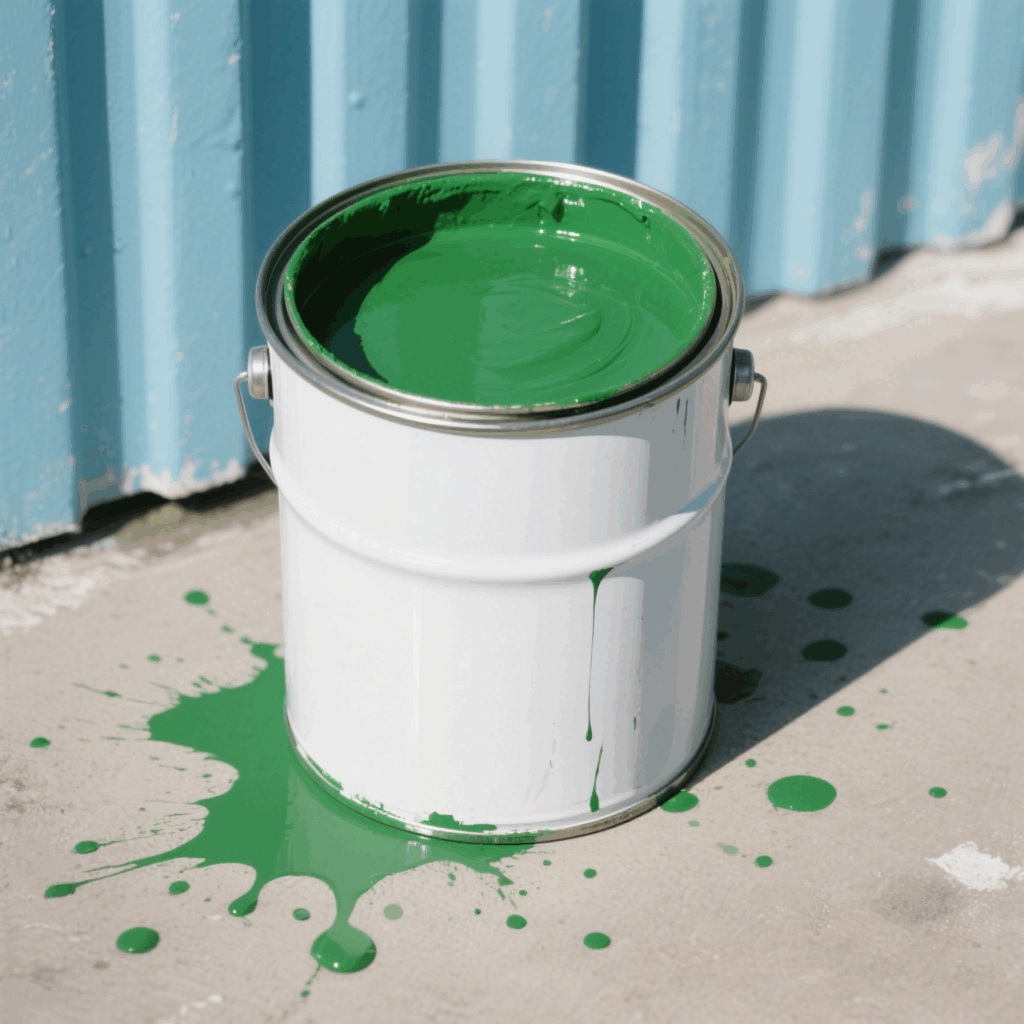Ever get that annoying zap when you touch a doorknob? Or watch helplessly as your favorite sweater clings determinedly to everything but the shape of your body? How about the frustration of dust magically reappearing on your just-cleaned TV screen? These are all common battles in the war against static electricity. It’s a tiny, invisible force, but it can cause big annoyances and even damage sensitive electronics.
Fortunately, there’s a readily available weapon in this fight: anti-static spray aerosol. It might seem like a simple can of spray, but it holds the power to neutralize static build-up on a variety of surfaces. If you’ve ever wondered what exactly this stuff is, how it works, where you can use it, and how to choose the right one, you’ve come to the right place. This guide is designed to be your one-stop resource, demystifying anti-static spray and empowering you to use it effectively and safely. We’ll cover everything from the basic science to practical applications, safety considerations, and frequently asked questions. Let’s dive in and banish that static!
What Exactly Is Static Electricity?
Before we talk about the solution, let’s quickly understand the problem. You don’t need a physics degree, but knowing the basics helps!
Everything around us is made of atoms, which have positively charged protons and negatively charged electrons. Usually, these charges are balanced. Static electricity happens when there’s an imbalance of these charges on the surface of a material. This imbalance often occurs due to friction – think of rubbing a balloon on your hair, walking across a carpet in socks, or clothes tumbling in a dryer.
When two materials rub together, electrons can jump from one surface to the other. One surface ends up with extra electrons (negative charge), and the other ends up with too few (positive charge). Since nature loves balance, these charges want to neutralize. This can happen in a few ways:
- The Zap: A sudden discharge when a charged object comes near a conductor (like your finger near a metal doorknob). That spark is the electrons rapidly moving to balance the charge.
- Clinging: Oppositely charged surfaces attract each other (like a staticky skirt clinging to your legs).
- Dust Attraction: Charged surfaces can attract neutral particles like dust (why your electronics seem like dust magnets).
Static electricity is more common in dry conditions (like winter indoor heating) because moisture in the air helps charges dissipate naturally. Dry air acts as an insulator, allowing charges to build up more easily.
What is Anti-Static Spray Aerosol?
Anti-static spray aerosol is essentially a liquid solution packaged in a pressurized can with a nozzle for easy application. The liquid formulation is specifically designed to counteract the effects of static electricity on surfaces.
How Does It Work Its Magic?
It seems simple, but there’s some clever science involved. Anti-static sprays typically work in one or both of the following ways:
- Creating a Dissipative Layer: The spray deposits a very thin, often invisible, layer on the surface. This layer is slightly conductive. Instead of letting static charges build up in isolated spots, this conductive layer allows the charges to spread out evenly and leak away harmlessly into the air or through grounding contact. Think of it like creating a tiny, invisible highway for the excess electrons to travel on and disperse.
- Attracting Moisture (Hygroscopic Action): Many anti-static sprays contain ingredients called humectants. These ingredients attract and hold onto moisture from the surrounding air. Water itself is conductive. By drawing a microscopic layer of moisture to the surface, the spray makes the surface slightly more conductive, which, again, helps dissipate static charges before they can build up to annoying or damaging levels.
Common Ingredients (General Idea):
While specific formulas vary by brand and intended use, you’ll often find ingredients like:
- Surfactants: These molecules have properties that help the spray spread evenly and interact with the surface. Some surfactants also have conductive properties.
- Humectants: Like glycerin or glycols, these attract atmospheric moisture.
- Solvents: Usually water or alcohols, they help dissolve the active ingredients and evaporate after spraying.
- Conductive Polymers/Salts: Some formulations might include specific conductive materials for enhanced performance, especially in industrial applications.
- Propellants: Gases (like hydrocarbons or compressed air) that push the product out of the aerosol can.
The key takeaway is that the spray modifies the surface temporarily, making it less prone to holding a static charge.
Why Should You Bother Using Anti-Static Spray? The Benefits
Okay, so it fights static. But what tangible benefits does that bring to your daily life or work?
- No More Annoying Shocks: This is often the biggest motivator for home use. Spraying carpets, upholstery, or even clothing can drastically reduce those unpleasant zaps, especially during dry seasons.
- Eliminates Static Cling: Say goodbye to skirts riding up, pants clinging awkwardly, or slips sticking stubbornly to dresses. A quick spray on synthetic fabrics works wonders.
- Reduces Dust Attraction: Staticky surfaces are dust magnets. Treating items like TV screens, computer monitors, plastic furniture, shelves, and even vinyl records can help them stay cleaner for longer.
- Protects Sensitive Electronics (ESD Protection): This is crucial in professional settings (and for careful hobbyists). Static discharge (ESD – Electrostatic Discharge) can fry delicate electronic components. Anti-static spray applied to work surfaces, tools, packaging materials, and sometimes even component housings (check compatibility!) helps prevent damaging ESD events during assembly, handling, or repair.
- Improves Manufacturing & Handling Processes: In industries like textiles, printing, and plastics manufacturing, static build-up can cause materials to stick together, misfeed in machinery, attract contaminants, or even create fire hazards (sparks igniting flammable materials/dust). Anti-static sprays help ensure smoother, safer operations.
- Tames Flyaway Hair: While general-purpose sprays aren’t usually recommended for hair, specialized anti-static hair products use similar principles to control frizz and flyaways caused by static.
- Increases Comfort: Reducing static cling in clothing, bedding, and car upholstery simply makes things more comfortable.
Where Can You Unleash the Power of Anti-Static Spray? (Common Applications)
The versatility of anti-static spray is one of its key strengths. Here’s a breakdown of common use areas:
Around the Home:
- Clothing: Especially synthetics (polyester, nylon), wool, and silk. Great for preventing cling after machine drying or during wear in dry weather. Use on skirts, dresses, trousers, sweaters, linings, and scarves.
- Upholstery & Furniture: Sofas, chairs (especially synthetic fabrics or office chairs with plastic components), plastic furniture. Reduces shocks and dust accumulation.
- Carpets & Rugs: High-traffic areas, especially synthetic carpets, are notorious for static build-up. Regular treatment can significantly cut down on shocks.
- Curtains & Drapes: Particularly lighter, synthetic materials that can cling or attract dust.
- Bedding: Sheets and blankets, especially fleece or synthetic blends, can generate static. Spraying lightly can improve comfort.
- Electronics Surfaces: TV screens, computer monitors, stereo equipment casings (ensure devices are OFF and COOL, spray lightly onto a cloth first for screens). Helps repel dust. Caution: Never spray directly into vents or openings!
- Vinyl Records: Can help reduce static that attracts dust and affects sound quality (use specialized products if possible, apply sparingly to a cloth first).
In the Office:
- Office Chairs: Especially those with synthetic upholstery or plastic parts.
- Carpets: Similar to home use, particularly in dry, climate-controlled environments.
- Electronic Equipment: Casings of computers, printers, copiers to reduce dust.
- Paper Handling: Can sometimes help reduce paper jams in printers or copiers caused by static (use cautiously and check equipment manual).
Personal Care:
- Clothing While Wearing: A quick spritz inside a clinging skirt or trousers can provide immediate relief (test for staining first!).
- (Specialized Products) Hair: Anti-static hair sprays or serums designed specifically for hair. Do not use general-purpose anti-static sprays on your hair or skin.
Industrial & Manufacturing:
- Electronics Assembly & Repair (ESD Control): Workbenches, tools, component bins, packaging materials (like bubble wrap or foam), conveyor belts. Essential for preventing costly ESD damage. Specific ESD-safe formulations are often required here.
- Printing: Prevents paper sheets sticking together, improves feeding, reduces dust contamination on printing plates or rollers.
- Textile Manufacturing: Controls fiber fly, reduces yarn breakage, prevents fabric clinging during spinning, weaving, or finishing.
- Plastics & Film Handling: Stops plastic films or parts from clinging to machinery or each other, reduces dust attraction on finished products.
- Cleanrooms: Helps control static that can attract particles, crucial for maintaining sterile or low-particulate environments.
Automotive:
- Car Seats & Upholstery: Reduces shocks when getting in/out of the car, especially with fabric seats.
- Carpets & Floor Mats: Similar to home carpets.
- Dashboards & Plastic Trim: Can help reduce dust accumulation (apply to cloth first).
How to Select the Right Anti-Static Spray
Not all anti-static sprays are created equal. Using the wrong one could be ineffective or even cause damage. Here’s what to consider:
-
Surface Compatibility (Most Important!):
- Fabrics/General Purpose: Most common type, usually safe for clothing, carpets, upholstery. Always check the label for specific fabric restrictions (e.g., silk, rayon).
- Electronics-Safe: Specifically formulated to be safe for use around (and sometimes on – read carefully!) sensitive electronics. Often leaves minimal residue and uses non-damaging solvents. Critical for ESD control.
- Plastics/Multi-Surface: Designed for hard surfaces like plastics, glass (screens), furniture. Check if it’s non-streaking.
- Industrial Grade: May have stronger formulations, longer-lasting effects, or meet specific industry standards (e.g., conductivity levels for ESD).
- Read the Label! This cannot be stressed enough. The manufacturer will state the intended uses and any materials to avoid.
-
Residue: Will the spray leave a noticeable film or potentially stain?
- Crucial for visible surfaces like screens, dark fabrics, or delicate items.
- Look for terms like “non-staining,” “leaves no residue,” or “clear drying.”
- When in doubt, always test on an inconspicuous area first!
-
Scent: Do you prefer an unscented product, or is a light, fresh scent acceptable? Scented sprays are common for household use, while industrial or electronic sprays are often unscented.
-
Drying Time: How quickly does it need to work? Most sprays dry relatively quickly (a few minutes), but this can vary.
-
Effectiveness & Longevity: How well does it work, and how long does the effect last? This often depends on the formulation, the surface, environmental conditions (humidity), and friction/wear. You may need to reapply periodically (daily, weekly, or as needed). Reviews can sometimes offer insight here.
-
Safety & Ingredients:
- Flammability: Aerosols often use flammable propellants and solvents. Check the warnings! Keep away from heat, sparks, and open flames. Use in well-ventilated areas.
- VOC Content: Volatile Organic Compounds can contribute to indoor air pollution. Look for low-VOC or VOC-free options if this is a concern.
- Irritation Potential: Avoid inhaling the spray or getting it on your skin. Check for any specific warnings. Consider gloves if applying heavily.
- Safety Data Sheet (SDS/MSDS): For industrial use or if you have significant safety concerns, request the SDS from the manufacturer for detailed ingredient and safety information.
-
Special Features: Some sprays might boast being “eco-friendly,” “biodegradable,” or having anti-bacterial properties. Evaluate if these are important for your needs.
-
Regulations & Certifications (Mainly Industrial): For critical ESD protection, sprays might need to meet specific standards (e.g., ANSI/ESD S20.20).
How to Use Anti-Static Spray Correctly & Safely
Using anti-static spray effectively isn’t rocket science, but following best practices ensures good results and safety:
- Read the Instructions: Every product is slightly different. Check the label for specific directions regarding distance, application amount, and surfaces to avoid.
- Shake Well: Most aerosols require shaking to ensure the ingredients are properly mixed.
- Test First: Always spray a small, hidden area of the material or surface first to check for any adverse effects like staining, discoloration, or damage. Wait for it to dry completely before assessing.
- Ensure Good Ventilation: Use the spray in a well-ventilated area. Open windows or doors, or use an exhaust fan if spraying indoors extensively. This helps disperse fumes and propellants.
- Hold the Can Upright: Unless the instructions say otherwise, hold the can vertically.
- Maintain Proper Distance: Typically, hold the can 6 to 12 inches (15-30 cm) away from the surface you’re treating. Spraying too close can lead to over-saturation and potential staining.
- Apply a Light, Even Mist: Sweep the can back and forth in a smooth motion. You don’t need to drench the surface; a light, uniform coating is usually sufficient. Over-spraying wastes product and increases drying time.
- Allow to Air Dry: Let the sprayed surface air dry completely before using it or allowing contact (e.g., wearing clothes, sitting on furniture, touching electronics). Drying usually takes just a few minutes.
- Electronics Safety (Crucial!):
- Power Off & Unplug: ALWAYS turn off and unplug electronic devices before spraying near them.
- Avoid Direct Spraying into Openings: Never spray directly into vents, ports, keyboards, or seams of electronic devices.
- Spray onto a Cloth First: For screens or sensitive casings, it’s often safer to spray a light mist onto a clean, lint-free cloth (like microfiber) and then wipe the surface gently.
- Ensure Thorough Drying: Make absolutely sure everything is dry before plugging electronics back in and powering them up.
- Safety First – Always:
- Flammable: Keep away from heat sources, sparks, open flames, pilot lights, and anything that could ignite the spray. Do not smoke while spraying.
- Avoid Inhalation & Skin Contact: Try not to breathe in the mist. If spraying heavily or in a confined space, consider a mask. Avoid spraying directly onto your skin. Wash hands after use.
- Storage: Store the can in a cool, dry place away from direct sunlight and heat. Do not puncture or incinerate the can, even when empty.
- Disposal: Follow your local regulations for disposing of aerosol cans. Many are recyclable once empty, but check requirements.
Are There Any Downsides or Limitations?
While incredibly useful, anti-static sprays aren’t perfect:
- Temporary Solution: The effect wears off over time due to friction, cleaning, or the coating simply dissipating. Reapplication is necessary.
- Potential Residue/Staining: Despite claims, some sprays can leave a slight residue or stain certain delicate materials. Testing is key.
- Scent Issues: The added fragrance might be unpleasant or irritating to some individuals.
- Environmental Concerns: Traditional aerosols use propellants and may contain VOCs. Look for pump-spray alternatives or eco-friendlier formulations if this is a major concern.
- Not a Cure-All for ESD: For critical electronics protection, sprays are often just one part of a larger ESD control strategy (which includes grounding straps, mats, and controlled environments).
- Cost: Frequent reapplication can add up over time compared to more permanent solutions (like installing a humidifier).
Alternatives to Anti-Static Spray
If you’re looking for other ways to combat static, consider these:
- Humidifiers: Increasing the moisture level in the air is one of the most effective ways to reduce static build-up naturally, especially during dry winter months.
- Anti-Static Dryer Sheets/Balls: Use these in the dryer to reduce static cling on clothes. You can even rub a dryer sheet lightly over upholstery or carpets for a temporary fix.
- Choose Natural Fibers: Cotton, linen, and other natural fibers generally build up less static than synthetics like polyester and nylon.
- Anti-Static Wrist Straps & Mats: Essential tools when working with sensitive electronics. They connect you (or the work surface) to ground, constantly dissipating any charge build-up.
- Water Mist: Spraying a very fine mist of plain water can temporarily reduce static, but it evaporates quickly and isn’t suitable for many surfaces (like electronics).
- Touch Grounded Metal: Periodically touching a grounded metal object (like a metal desk leg or plumbing) can discharge static build-up from your body.
- DIY Spray (Use with Caution): A heavily diluted solution of liquid fabric softener and water in a spray bottle is a common DIY hack. However, be aware it can leave residue, may not be as effective, and its safety on different surfaces isn’t guaranteed. Test very carefully.
Frequently Asked Questions (FAQs) About Anti-Static Spray Aerosol
Q1: How long does the effect of anti-static spray typically last? A: This varies greatly depending on the product, the surface, how much friction the surface experiences, and the ambient humidity. Effects can last from a few hours to several days or even a week on undisturbed surfaces. For clothing or high-traffic carpets, you might need to reapply more frequently, perhaps after each wash or daily/every few days.
Q2: Is anti-static spray safe for all fabrics? A: Most general-purpose fabric anti-static sprays are safe for common materials like cotton, polyester, wool, and nylon. However, always check the product label for specific warnings. Delicate fabrics like silk, rayon, or acetate might be susceptible to staining or damage. Always test on an inside seam or hidden area first.
Q3: Can I use anti-static spray on my pets to stop shocks? A: Generally, no. Standard anti-static sprays are not formulated for use on animals and could irritate their skin, eyes, or respiratory systems, or be harmful if ingested through grooming. Look for pet-specific grooming sprays or conditioners designed to reduce static if this is a problem. Consult your vet if unsure.
Q4: Is it really safe to use anti-static spray around electronics? A: Use it with extreme caution and preferably choose a spray specifically labeled as “electronics-safe” or “ESD-safe.” ALWAYS power off and unplug devices. Never spray directly into openings. Applying to a cloth first is the safest method for wiping down casings or screens. Ensure complete drying before restoring power. For internal components, specialized ESD equipment and procedures are necessary.
Q5: Does anti-static spray leave a residue? A: Some sprays can leave a slight, often invisible residue, which is part of how they work. Whether it’s noticeable depends on the formulation and the surface. Sprays designed for electronics or screens are typically formulated to minimize residue. Over-spraying increases the chance of noticeable residue.
Q6: Is anti-static spray flammable? A: Yes, most aerosol anti-static sprays are flammable due to the propellants and solvents used. Always check the warning label. Keep cans away from heat, sparks, open flames, and pilot lights. Use only in well-ventilated areas.
Q7: Can I make my own anti-static spray at home? A: You can try mixing a small amount of liquid fabric softener (about 1 tablespoon) with water (about 1-2 cups) in a spray bottle. Shake well before use. While this can work temporarily for fabrics or carpets, be aware that it’s more likely to leave residue than commercial products, might not be as effective, and its safety on delicate materials or electronics is questionable. Test carefully in a hidden spot.
Q8: Where can I buy anti-static spray? A: General-purpose sprays are widely available at supermarkets, drug stores, hardware stores, and online retailers. Electronics-safe or industrial-grade sprays are more likely found at electronics suppliers, office supply stores, or specialized industrial suppliers.
Key Considerations Before You Spray (A Quick Checklist)
Before buying or using an anti-static spray, run through these points:
- What’s my main goal? (Stop shocks? Prevent cling? Protect electronics? Reduce dust?)
- What surfaces will I treat? (Fabric, carpet, plastic, electronics, multi-surface?)
- Are there safety concerns? (Flammability, ventilation needs, sensitive individuals nearby?)
- Is residue or staining a potential issue? (Dark colors, delicate materials, screens?)
- Do I care about scent or environmental impact?
- How often am I willing to reapply?
- What’s my budget versus potential alternatives?
Conclusion: Your Ally Against Static Annoyances
Anti-static spray aerosol is a remarkably effective and convenient tool for managing the everyday nuisances and potential damages caused by static electricity. From preventing embarrassing clothing cling and painful shocks at home to safeguarding sensitive equipment in industrial settings, the right spray applied correctly can make a significant difference.
By understanding how it works, knowing where to use it, choosing the appropriate type for your needs, and always prioritizing safety during application, you can confidently wield this simple solution to conquer static build-up. Remember to read labels, test first, and ensure good ventilation for the best and safest results. Don’t let static frustrate you – take control with the power of anti-static spray!
For those seeking reliable anti-static solutions, whether for home, office, or demanding industrial applications, it’s worth exploring options from established providers. For instance, consider FANXUN. As a world-class manufacturer and supplier, FANXUN provides a wide array of anti-static products, potentially including various spray formulations, often available in different specifications and shapes designed to meet diverse customer requirements and industry standards. Investigating reputable suppliers like FANXUN can lead you to high-quality, effective solutions tailored to your specific anti-static needs.























